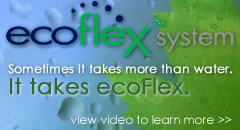Accommodating travelers and their loved ones—as well as airport staff and airline crews—for 24 hours a day, airports present a unique cleaning challenge that requires an efficient, unobtrusive solution. Advance floor cleaning equipment handles heavy foot traffic and luggage roller marks with ease, keeping airport facilities welcoming and well maintained. Our outdoor cleaning equipment delivers superior performance on airport runways and gateways, maintaining a safe, clean and professional appearance.
Click here for more information about Advance airport cleaning equipment.

Advance is one of the world’s leading manufacturers of high-quality commercial and industrial floor cleaning and maintenance equipment. Advance is committed to developing versatile equipment that supports both environmentally-friendly cleaning and facility cleanliness. Advance is a brand of Nilfisk-Advance, Inc.
Monday, March 25, 2013
Monday, March 18, 2013
Setting K-12 School Cleaning Standards
This article was originally published by Contracting Profits.
Elementary and high school facilities across the United States pose health risks to students and staff due to the lack of a standardized approach to assessing the effectiveness of their cleaning regimen. A vast majority of facilities judge cleaning by sight, smell and even touch. But this approach is woefully inadequate in this age of MRSA, norovirus and other infectious agents that cannot be detected by the senses alone.
Realizing this serious deficiency, ISSA and the Cleaning Industry Research Institute (CIRI) entered into a joint venture, commissioning an independent body of scientists led by Dr. Richard Shaughnessy, University of Oklahoma – Tulsa, and Dr. Gene Cole, Brigham Young University, Provo, Utah, to perform research intended to provide three deliverables.
The first goal was to identify an objective, quantitative method of measuring cleanliness. After thoroughly reviewing various devices, the researchers concluded that ATP (adenosine triphosphate) meters are a valid, relatively simple, rapid and affordable measure of the level of cleanliness of critical interior surfaces in schools. Just as important, these devices were found to be reliable and consistent in their measurements across geographic and climatic zones.
Secondly, ISSA and CIRI tasked the researchers with producing reasonable range values for measuring levels of cleanliness in schools across three different ATP meters, representing a standardized and quantitative approach to measuring clean. With this step, “cleanliness” was defined based on ATP-RLU (relative light units) values.
Now, ISSA and CIRI will use this information to establish a practical standard and protocol that will empower schools to validate their cleaning regimen, as well as help them more efficiently allocate their limited resources for cleaning and maintenance. This protocol — the Clean Standard: K-12 — is currently under development, but is expected to be finalized by June 2013.
Read the full article here to learn more about the purpose of school cleaning standards.
Elementary and high school facilities across the United States pose health risks to students and staff due to the lack of a standardized approach to assessing the effectiveness of their cleaning regimen. A vast majority of facilities judge cleaning by sight, smell and even touch. But this approach is woefully inadequate in this age of MRSA, norovirus and other infectious agents that cannot be detected by the senses alone.
Realizing this serious deficiency, ISSA and the Cleaning Industry Research Institute (CIRI) entered into a joint venture, commissioning an independent body of scientists led by Dr. Richard Shaughnessy, University of Oklahoma – Tulsa, and Dr. Gene Cole, Brigham Young University, Provo, Utah, to perform research intended to provide three deliverables.
The first goal was to identify an objective, quantitative method of measuring cleanliness. After thoroughly reviewing various devices, the researchers concluded that ATP (adenosine triphosphate) meters are a valid, relatively simple, rapid and affordable measure of the level of cleanliness of critical interior surfaces in schools. Just as important, these devices were found to be reliable and consistent in their measurements across geographic and climatic zones.
Secondly, ISSA and CIRI tasked the researchers with producing reasonable range values for measuring levels of cleanliness in schools across three different ATP meters, representing a standardized and quantitative approach to measuring clean. With this step, “cleanliness” was defined based on ATP-RLU (relative light units) values.
Now, ISSA and CIRI will use this information to establish a practical standard and protocol that will empower schools to validate their cleaning regimen, as well as help them more efficiently allocate their limited resources for cleaning and maintenance. This protocol — the Clean Standard: K-12 — is currently under development, but is expected to be finalized by June 2013.
Read the full article here to learn more about the purpose of school cleaning standards.
Monday, March 11, 2013
Cleaning to Fit Any Routine
Floor-cleaning routines are easier with the EcoFlex System, which cleans like you do. Clean low-traffic areas with water only, use ultra-low detergent when you need to, and jump to a burst of power to deep-clean and tackle dirtier areas. Find the routine that works for you. The flexibility to develop a cleaning routine that works for your facility and to make on-the-fly adjustments will help you get the most out of all of your resources.
Economical and ecological. Advance’s EcoFlex System gives you the flexibility to clean your floors more efficiently. By using a system that cleans like you do, you’ll reduce your cost to clean and create a more sustainable cleaning program.
Click here to learn more about EcoFlex, now available on select Advance scrubbers.
Economical and ecological. Advance’s EcoFlex System gives you the flexibility to clean your floors more efficiently. By using a system that cleans like you do, you’ll reduce your cost to clean and create a more sustainable cleaning program.
Click here to learn more about EcoFlex, now available on select Advance scrubbers.
Monday, March 4, 2013
FTC Revised Green Guides
This article was originally published by Sanitary Maintenance.
The terms “green” and “environmentally friendly” are common vernacular in the cleaning industry; unfortunately they are often loosely applied and lead to greenwashing. The latest revisions of the Federal Trade Commission’s (FTC) Green Guides should put an end to misleading environmental marketing claims.
First introduced in 1992 to help marketers avoid making misleading claims, the FTC revised the Green Guides in 1996 and 1998. However, a lot has changed in the last 14 years and the new rules, released in 2012, include new guidelines for environmental claims that were not common in 1998.
Product manufacturers are updating their marketing materials to comply with the new guidelines. Distributors, too, need to make sure their catalogs, brochures and even sales pitches are up-to-date — or face stiff penalties. Distributors are considered retailers and can be held liable for making false green claims.
Read the full article here to learn how the new FTC green guides qualify green.
The terms “green” and “environmentally friendly” are common vernacular in the cleaning industry; unfortunately they are often loosely applied and lead to greenwashing. The latest revisions of the Federal Trade Commission’s (FTC) Green Guides should put an end to misleading environmental marketing claims.
First introduced in 1992 to help marketers avoid making misleading claims, the FTC revised the Green Guides in 1996 and 1998. However, a lot has changed in the last 14 years and the new rules, released in 2012, include new guidelines for environmental claims that were not common in 1998.
Product manufacturers are updating their marketing materials to comply with the new guidelines. Distributors, too, need to make sure their catalogs, brochures and even sales pitches are up-to-date — or face stiff penalties. Distributors are considered retailers and can be held liable for making false green claims.
Read the full article here to learn how the new FTC green guides qualify green.
Subscribe to:
Posts (Atom)

